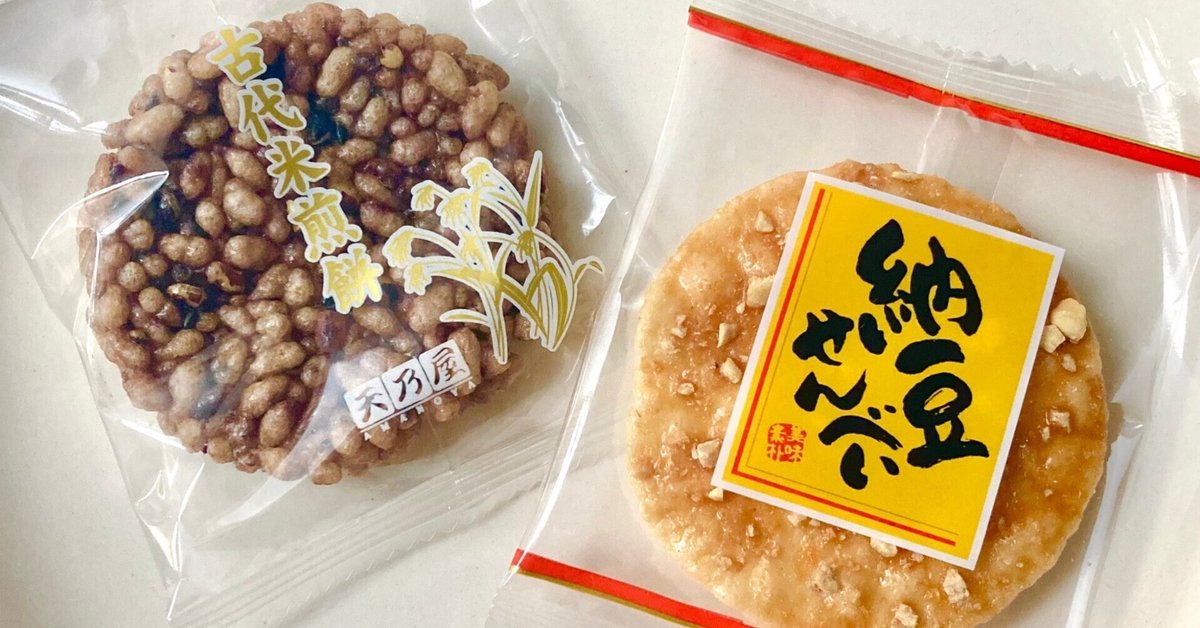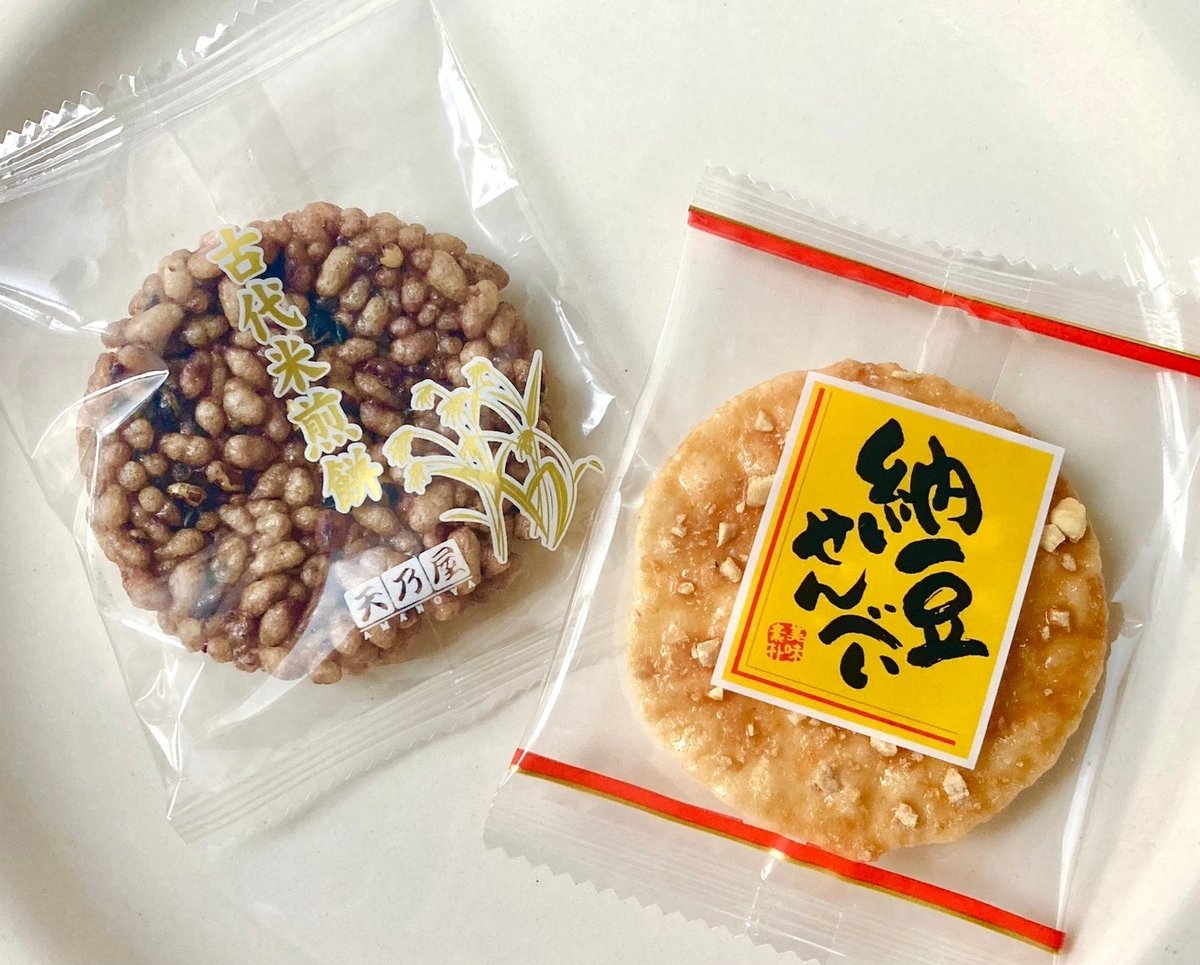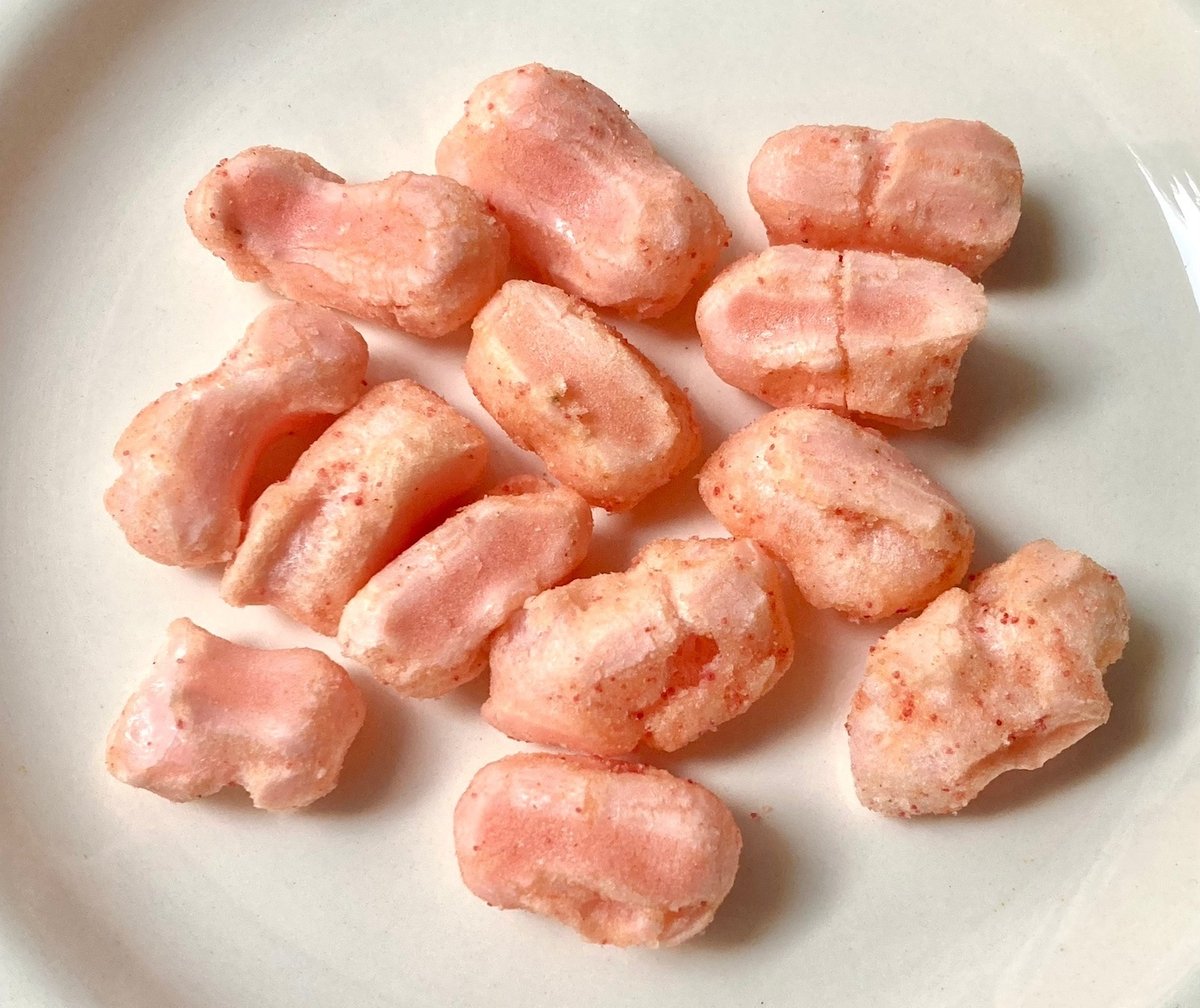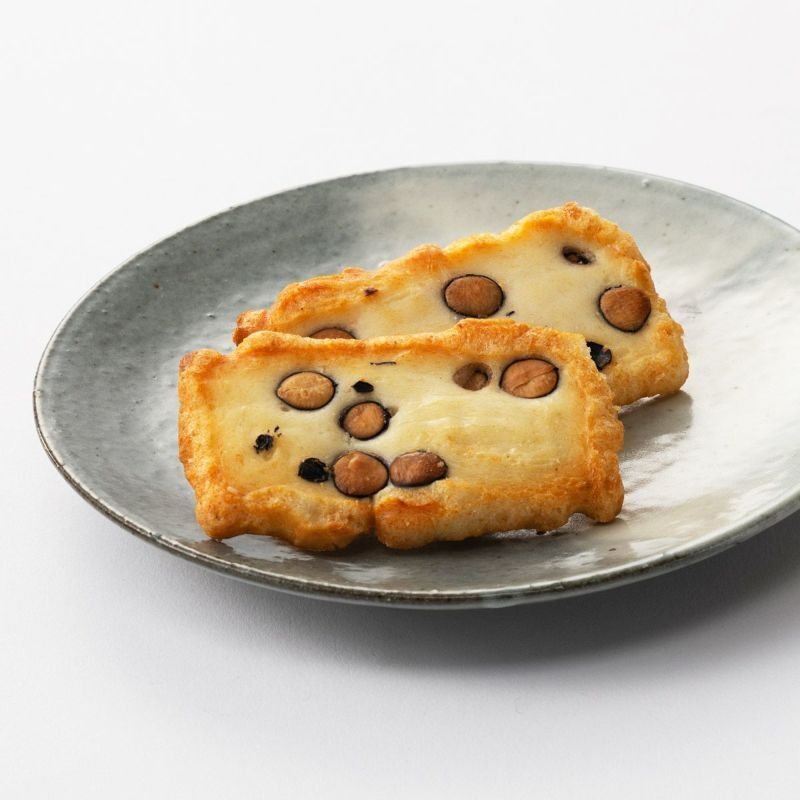
Dig Japan vol.36 “Senbei (せんべい), Okaki (おかき) and Arare (あられ)”
Dig Japan is a series in which I research and introduce in English topics related to traditional Japanese culture that interest me. In this article, I will introduce senbei, okaki and arare.
Senbei, okaki and arare are all wagashi made with rice, but they differ in shape, size, and ingredients. First of all, the difference between senbei and okaki is the type of rice used: non-stick rice is used for rice crackers, and glutinous rice is used for rice crackers. The most of senbei has flat shape and difficult to swell. Okaki, on the other hand, swells easily when baked and has a softer texture than rice crackers. Like okaki, arare is made with sticky rice, but the clear difference from okaki is the size. All of them have a long history, and have long been popular snacks for the common people. Let's take a look at the origins and characteristics of each.
Senbei

There are various theories about the origin of senbei, including that it was introduced from China during the Asuka period, and that Kukai brought it back from China during the Heian period, but the origin is unclear. However, the first senbei made in Japan was made with wheat flour, not rice. The dictionary “Wamyo Ruijusho,” compiled in the mid-Heian period, describes senbei made by roasting wheat flour in oil, which shows that wheat flour preceded rice in the history of senbei.
A few hundred years later, “Shio-senbei” made with non-glutinous rice and salt appeared. From the early Edo period to the end of the Edo period, senbei made from rice flour dipped in soy sauce and baked became popular mainly in the Kanto region and are said to have become hugely popular among the common people. As a result, two types of senbei with different flavors, made with wheat flour and rice, were created, which became the prototypes for spicy one and sweet one, respectively.
Senbei is a type of higashi (dried confectionery), and while it is generally round in shape, there are many other varieties, such as triangular rice ball-shaped or Daruma-shaped. There is a wide variety of products, but they can be broadly divided into two types: those made with rice, such as “Soka Senbei,” and those made with wheat flour, such as “Kawara Senbei.” Rice-based senbei is often seasoned with salt or soy sauce, while wheat flour-based senbei is made with eggs and sugar, giving it a subtle sweetness.
Okaki and Arare

The origins of okaki and arare can be traced back to Shinto rituals during the Nara period. At the time, rice-growing culture was introduced from China, and Japanese farmers held Shinto rituals to offer rice to the gods in hopes of a good harvest. The custom of roasting and eating the offered rice was born, and this is said to be the origin of arare. The ancient local chronicle “Yamashiro Fudoki” mentions the names “arare mochi” and “tama arare,” and it seems that arare production had already begun during the Heian period.
In 1587, when the lord of Sanuki, Ikoma Chikamasa, welcomed his princess to the shrine, one of the peasants offered arare as an offering in celebration, and the story of arare is also included in the 1718 “Gozengashi Hidensho.” From the Edo period through to the Meiji period, the demand for rice crackers increased, and with the advancement of mechanization, arare became popular among the masses.

The name “okaki” comes from “okaki mochi” made from sliced glutinous rice, while the name “arare” comes from the ice particles that fall from the clouds. The difference between them is the size and the way they are cut. Generally, anything over 5cm in size is called okaki and anything smaller is called arare. In the past, it was common to cut arare with a knife and okaki with a mallet but there is no difference in the manufacturing method today.
In fact, the name varies depending on the region. Arare is the name mainly used in the Kanto region, but in Kansai it is also called okaki. The general method of making okaki and arare is to mold steamed and pounded glutinous rice, cut it into small pieces, bake it, and season it. The seasonings are various, such as salt, soy sauce, miso, shrimp, plum and shiso (perilla).
Kaki no Tane, a famous snack to go with alcohol, was born from an attempt to make arare that went wrong. It was first made by Naniwaya Seika in Nagaoka City, Niigata Prefecture. When the company was founded in the Taisho period, they cut mochi by hand and cut them into oval shapes to make arare. However, one day they accidentally crushed the mold, and when they made arare using the distorted mold, the resulting arare looked like kaki no tane (persimmon seed), which is said to be the origin of the snack.
This article was written by 𝐡𝐢𝐫𝐨𝐤𝐨, working as a freelance translator and PR for overseas apparel brands in Japan, with the aim of broadening her own knowledge of traditional Japanese culture and spreading it to the world.
いいなと思ったら応援しよう!

